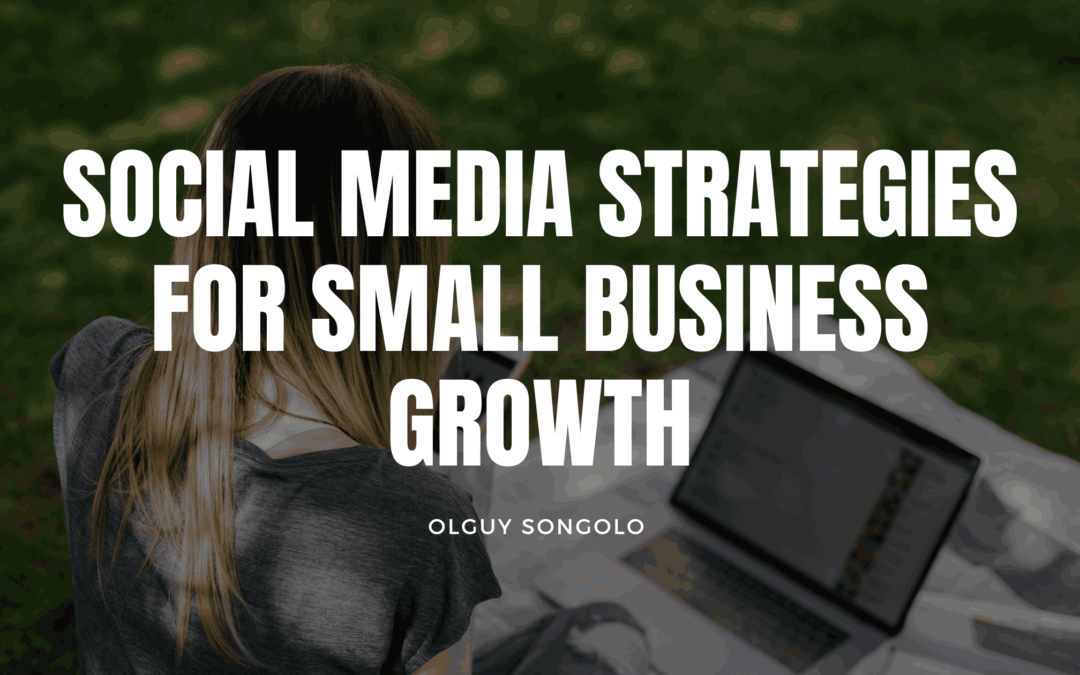In today’s digital age, social media is one of the most powerful tools for small businesses. It provides an affordable way to connect with customers, build brand awareness, and drive sales. However, success on social media requires more than just creating accounts and posting sporadically. A well-thought-out strategy can help small businesses maximize their presence on platforms like Instagram, Facebook, LinkedIn, and TikTok.
Why Social Media Matters for Small Businesses
Social media platforms offer an unparalleled opportunity to reach large audiences. Unlike traditional advertising, social media allows for direct interaction with customers, enabling businesses to build meaningful relationships. For small businesses, this level of engagement can set them apart from larger competitors.
Additionally, social media provides detailed analytics that can help businesses understand their audience’s behavior and preferences. By leveraging these insights, small businesses can create tailored campaigns that resonate with their target market.
Step 1: Define Your Goals
Before diving into social media, it’s crucial to define your objectives. Are you looking to increase brand awareness, drive website traffic, generate leads, or boost sales? Having clear goals will guide your strategy and help you measure success. For example:
- “Our goal is to grow our Instagram following by 20% in the next three months and increase engagement by 15%.”
Step 2: Choose the Right Platforms
Not all social media platforms are created equal, and each caters to different audiences. For instance:
- Instagram: Ideal for visually appealing content and engaging younger audiences.
- Facebook: Great for community building and targeting a broad demographic.
- LinkedIn: Best for B2B marketing and professional networking.
- TikTok: Perfect for creative, short-form videos aimed at Gen Z and millennials.
Focus on the platforms where your target audience spends the most time. Spreading yourself too thin across all platforms can dilute your efforts.
Step 3: Develop a Content Plan
A successful social media presence requires consistent and high-quality content. Create a content calendar to plan posts in advance and ensure a steady flow of updates. Your content should align with your brand voice and appeal to your audience’s interests.
Types of content to include:
- Educational Posts: Share tips, how-tos, and industry insights.
- Promotional Content: Highlight products, services, and special offers.
- Behind-the-Scenes: Showcase your team, workspace, or production process.
- User-Generated Content (UGC): Share posts from customers who use your products.
- Interactive Content: Polls, quizzes, and Q&A sessions encourage engagement.
For example, a local bakery might post a video of their baking process, share customer reviews, and announce seasonal promotions.
Step 4: Engage with Your Audience
Social media is not a one-way communication channel. Engage with your followers by responding to comments, answering questions, and participating in conversations. This interaction builds trust and fosters a sense of community around your brand.
Proactively seek out opportunities to engage. For instance, comment on posts within your niche, participate in trending hashtags, or collaborate with influencers. Consistent interaction shows that you value your audience and strengthens your relationship with them.
Step 5: Use Paid Advertising
Organic reach on social media is becoming increasingly limited, making paid advertising a valuable tool for small businesses. Social media platforms offer cost-effective advertising options with advanced targeting capabilities. You can reach specific demographics, such as location, age, interests, and even behavior.
For example, a yoga studio could run a Facebook ad targeting local residents interested in fitness. Pairing engaging visuals with a compelling call-to-action (CTA) can significantly boost campaign results.
Step 6: Track and Analyze Performance
Regularly monitor your social media performance using analytics tools provided by the platforms. Key metrics to track include:
- Engagement Rate: Likes, comments, shares, and saves.
- Reach and Impressions: How many people see your content.
- Click-Through Rate (CTR): The percentage of viewers who click on your links.
- Conversion Rate: How many actions (e.g., purchases or sign-ups) result from your posts.
Analyzing these metrics will help you identify what works and what doesn’t, allowing you to refine your strategy.
Common Mistakes to Avoid
- Inconsistency: Posting irregularly can cause followers to lose interest. Stick to a consistent schedule.
- Ignoring Analytics: Failing to analyze performance data means missed opportunities for improvement.
- Over-Promotion: Constantly selling without providing value can alienate your audience. Balance promotional content with engaging and educational posts.
- Neglecting Engagement: Ignoring comments or messages creates a negative impression.
Success Stories: Small Businesses That Shine
Consider a local coffee shop that uses Instagram Stories to showcase daily specials and customer shoutouts. By actively engaging with their community, they build loyalty and attract new customers. Similarly, a small clothing boutique on TikTok might create fun videos showing outfit ideas, gaining traction through creative content.
Social media is a powerful tool for small businesses to connect with their audience, build brand awareness, and drive growth. By defining clear goals, choosing the right platforms, creating compelling content, and engaging with followers, small businesses can maximize their impact. Remember, success on social media takes time and consistency. Start small, track your progress, and adjust your strategy as needed. With dedication and creativity, social media can become a cornerstone of your business growth.

